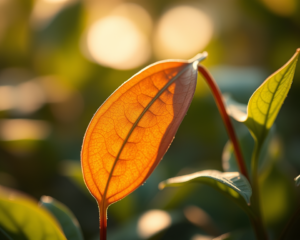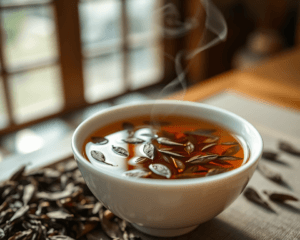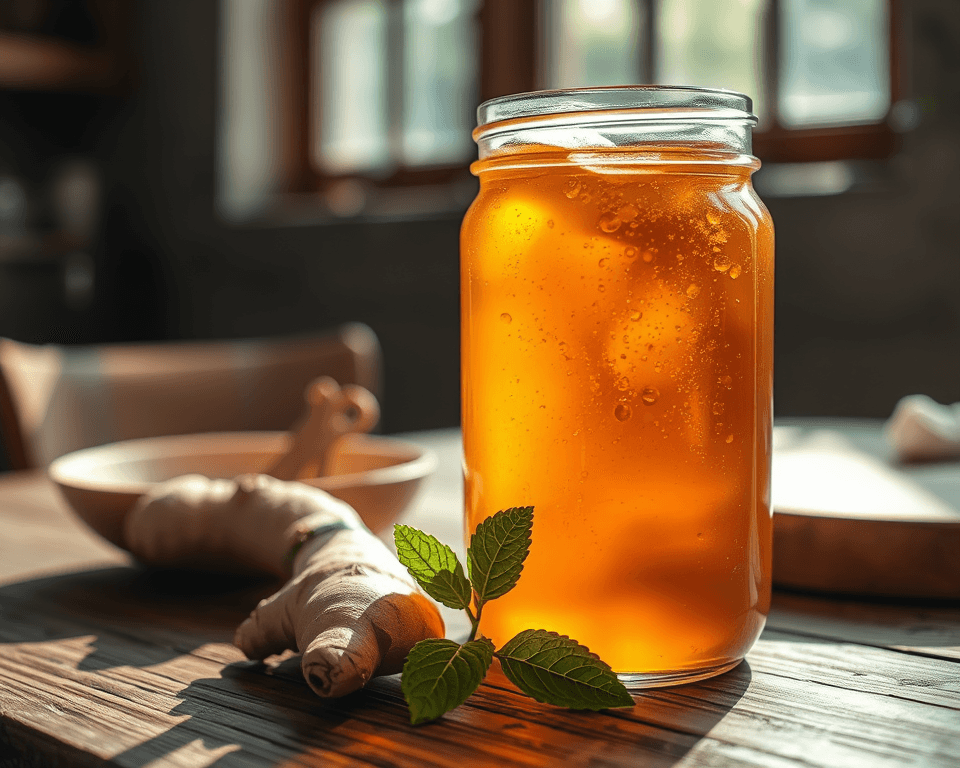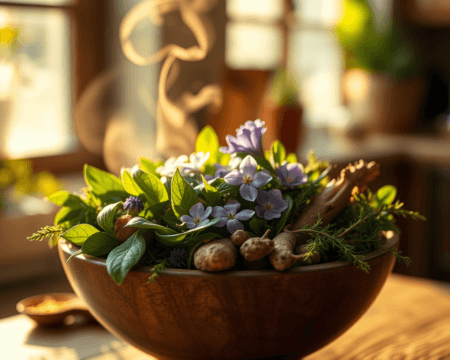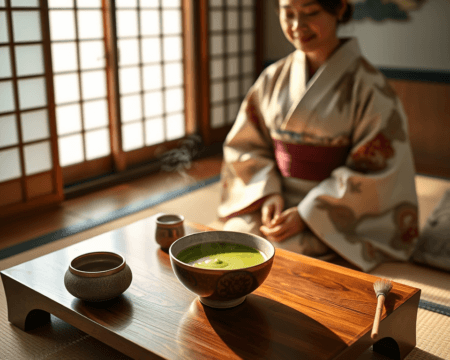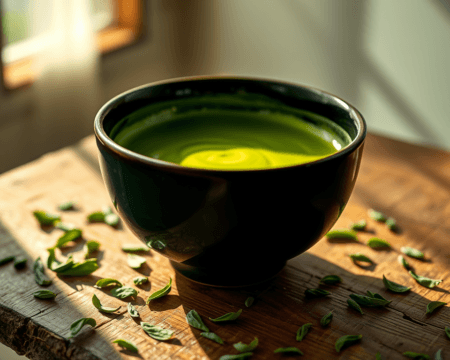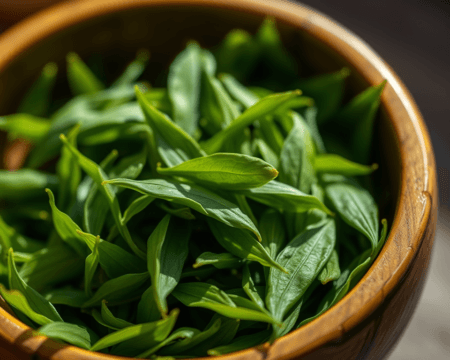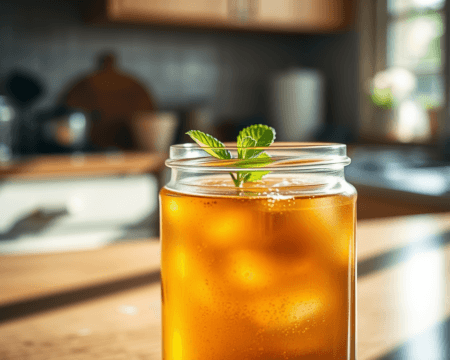You’ve heard the buzz about kombucha, right? This fizzy, tangy drink isn’t just trendy; it’s a health powerhouse. But what if you want to brew your own batch and you don’t have any starter tea? No sweat! I’m here to guide you step-by-step through creative fermentation, so you can whip up delicious kombucha without skipping a beat.
Key Takeaways:
– Kombucha is packed with probiotics and offers various health benefits.
– You can experiment with different teas and sweeteners to create unique flavors.
– Troubleshooting common issues can ensure your brew is a success.
– The fermentation process is adaptable to your home environment.
– Gathering the right tools makes brewing easier and more enjoyable.
Understanding Kombucha and Its Benefits
What is Kombucha?
Kombucha is a fermented tea that’s been around for thousands of years—originating from East Asia, and it’s made by fermenting sweetened tea with a SCOBY (Symbiotic Culture of Bacteria and Yeast). It’s not just a drink; it’s like a magic health potion! Thanks to its probiotic qualities, kombucha promotes gut health and supports your immune system. You could call it an ancient beverage that’s turned into a modern health tonic.
Health Benefits of Brewing Kombucha at Home
Let’s talk about why brewing your own kombucha is worth the effort. First up, it’s all about homemade kombucha being packed with natural probiotics. These little warriors help your digestive health—think of them as your gut’s best buddies. On top of that, brewing at home means you can control the ingredients, which equals a detox-friendly drink that supports your immune system. Craft kombucha provides the benefits of traditional recipes while letting you tap into your creativity.
Step-by-Step Instructions for Kombucha Without Starter Tea
Gathering Ingredients and Equipment
Before you get your hands dirty, let’s gather what you need. Here’s what I suggest for your brewing toolkit:
- Brewing jar: A large glass jar (at least 1-gallon capacity) works great.
- Tea: Black or green tea is the traditional choice, but herbal or fruit teas can shake things up.
- Sweeteners: White sugar is a classic, but you could also experiment with honey or agave syrup.
- Water: Filtered water is best to eliminate any unwanted chemicals.
- SCOBY: You can get one from a friend or order one online.
Getting these essentials ready sets the stage for success!
Detailed Brewing Process
Now onto the fun part: brewing. Here’s how it works.
- Boil Water: Start by boiling about a quart of filtered water.
- Steep Tea: Once boiled, pour the water over your tea bags (about 4-6, depending on your taste). Let it steep for 10-15 minutes—this helps extract the flavors.
- Add Sugar: While your tea is still hot, stir in about a cup of sugar until it dissolves completely. This sweet kick fuels the fermentation process.
- Cool It Down: Add about three quarts of cool, filtered water to bring the temperature down. You want your tea lukewarm—hot tea can damage the SCOBY.
- Add the SCOBY: Once your tea is at the right temperature, add the SCOBY gently. If you don’t have starter tea, that’s no problem. Just remember: the fermentation time may vary.
- Cover and Ferment: Cover the jar with a clean cloth and a rubber band. Place it in a warm, dark space (about 70-85°F is ideal). Now, patience is key! Fermentation takes about 7-14 days.
Watch and smell! During this time, the sweetness will change into a tangy flavor. You’ll know it’s ready when it’s a perfect balance of sweet and sour.
Alternative Methods and Ingredients for Kombucha
Exploring Different Tea Bases
One of the best parts about brewing your own kombucha is experimenting with different teas. Sure, black and green teas are great, but why not try something a little more adventurous?
- Herbal tea kombucha: Chamomile or peppermint can yield a refreshing twist.
- Caffeine-free options: Herbal blends are perfect if you’re looking to cut back on caffeine.
- Fruit tea: Go wild with fruity flavors—berry blends or hibiscus can add a fun kick.
Experimentation is part of the game, and your taste buds will thank you for it!
Alternative Sweeteners and Flavoring Techniques
Once you’ve nailed down your basic brew, let’s jazz it up. After the first fermentation, you can introduce flavorings. Here’s how:
- Honey kombucha: Use honey instead of sugar for a different sweetness and unique flavor.
- Agave syrup: This offers a lighter, less sugary taste.
- Fruit-infused kombucha: Toss in some fresh fruits during the second fermentation to amplify that fruit flavor. Think strawberries, peaches, or even ginger!
Add spices like cinnamon or cloves for a cozy herbal twist. Each ingredient will transform your basic kombucha into something special—it’s all about finding what resonates with your palate.
Troubleshooting Common Kombucha Brewing Issues
Identifying and Resolving Common Problems
Kombucha brewing can sometimes feel like solving a mystery. If things go sideways, here’s what to keep an eye on:
- Mold Prevention: Mold looks like fuzz and usually occurs when your brewing conditions aren’t right. If you see any, toss that batch out and start fresh.
- Off-Flavors: If your brew tastes overly vinegary, it may be fermenting too long. Check it regularly—trust your taste buds to guide you!
- Carbonation Control: Want fizz? Make sure you’re sealing your bottles tightly for a second fermentation, adding a bit of sugar can help build that bubbly goodness.
Understanding how to balance fermentation and flavors is key to your kombucha success.
Adapting Kombucha Brewing to Your Environment
Brewing isn’t one-size-fits-all. Different climates can really affect your fermentation process. If it’s cold, your fermentation will slow down. If it’s hot, it speeds up. Here’s what to do:
- Cold Weather Brewing: Consider placing your jar near a heater (but not directly on it) or cover it with a blanket for warmth.
- Temperature Variation Effects: Keep an eye on the temperature. If it dips, your SCOBY might take longer to work its magic.
Just get to know your space, and adjust as needed! Your patience will pay off with a delightful brew.
Learning from Experience: Tips for Beginners
As a new home brewer, you might feel nervous about kicking things off. Remember, it’s all about trial and error! Here are some pieces of advice from my journey:
- Trust your instincts: If it smells great and tastes right—you’re on the right track!
- Document your brewing process: Keep track of what ingredients and brewing times you use. It’ll help you recreate and perfect your favorite batches.
- Share your experiences: Join a kombucha brewing community online or in-person. Sharing tips and techniques can inspire you and keep you motivated.
Every batch is a learning opportunity. Celebrate the successes and learn from the not-so-great brews as you develop your own kombucha expertise!
Frequently Asked Questions
Can I brew kombucha without a SCOBY?
No, you cannot brew kombucha without a SCOBY, as it is essential for fermentation. However, you can obtain a SCOBY from a friend, purchase one online, or even grow your own from store-bought kombucha.
What is the ideal temperature for fermenting kombucha?
The ideal fermentation temperature for kombucha is between 70°F and 85°F. This range encourages proper fermentation while preventing the growth of harmful bacteria. If temperatures are too low, fermentation will slow down, while high temperatures can lead to over-fermentation.
How do I know when my kombucha is ready to bottle?
Kombucha is ready to bottle when it balances sweetness with acidity. Generally, this takes about 7-14 days. Taste testing is the best way to determine readiness; you should find a pleasant tang with some residual sweetness.
What should I do if my kombucha develops mold?
If you see mold (fuzzy, dark spots) on your kombucha, it’s best to discard the entire batch, including the SCOBY. Mold can indicate poor brewing conditions, so ensure you are using clean equipment and ingredients for your next batch.
How can I naturally flavor my kombucha during the second fermentation?
You can add a variety of fruits, herbs, or spices during the second fermentation. Common additions include berries, ginger, mint, or citrus. Just slice or crush the ingredients, add them to your bottles, and let it ferment for another 3-7 days to infuse the flavors.
Is it safe to drink homemade kombucha?
Homemade kombucha is generally safe to drink as long as it is brewed properly and within clean conditions. Ensure to monitor for mold and off-flavors and to follow the fermentation timeline to minimize risks.
What types of tea are best for brewing kombucha?
Black and green teas are traditional choices due to their nutrient content. However, you can experiment with herbal and fruit teas as well. Just avoid any teas that contain oils (like Earl Grey) or artificial flavors, as they may hinder the fermentation process.
How long does kombucha fermentation take before it’s ready?
The initial fermentation typically takes between 7 to 14 days. Factors such as temperature, sweetness, and personal taste preference will affect the exact timing.
Can I use artificial sweeteners for my kombucha?
Artificial sweeteners are not recommended for kombucha brewing, as they do not provide the necessary nutrition for the SCOBY to ferment properly. Stick with natural sweeteners like sugar, honey, or agave for the best results.
How do I store leftover kombucha after bottling?
Store bottled kombucha in the refrigerator to slow down the fermentation process. It can last for several weeks when refrigerated, but it’s best enjoyed fresh for optimal flavor and probiotic benefits.
